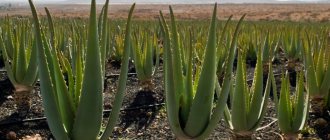Amateur and professional gardeners pay special attention to such an important process as propagating clematis by cuttings. It is this method that makes it possible to obtain several more copies of your favorite plant variety. The process is quite easy and quick if you keep in mind some important points and tips. When cuttings are successful, beautiful young clematis grow.
Propagation by cuttings
Propagation of forsythia by cuttings - how to propagate in summer
Propagating clematis by cuttings is one of the fastest ways. Clematis cuttings can be carried out in spring, summer and autumn. Each period has its own characteristics. Each of them is discussed in detail below.
Propagation by cuttings
Propagation of clematis in spring
In spring, cuttings of vines are made with green shoots. This process can be combined with spring pruning. The procedure is carried out in May or June in the southern parts, in June and July in the Middle Zone.
For cuttings you need to prepare: a knife, pruning shears, soil, a cutting board, stimulants for root formation, a container, a bag.
Detailed master class on how to make green cuttings:
- To obtain a cutting, you should choose a plant that is at least two years old. It must be strong. No more than a third of the shoots can be cut off from a bush. The optimal shoot option for rooting is a length of 90 cm, elastic and flexible. If there is no time to prepare the cutting for planting immediately after pruning, it can be placed in water.
- Cutting cutting. The cutting is cut off from the central part of the shoot. The twig is laid out on the board. Then you need to cut off with a knife from below 2-3 cm from the internode in the middle part of the shoot. The bottom of the branch is cut 5 cm below the internode. The leaves on the sides are also removed.
- Preparing containers. It is necessary to prepare the container and fill it with soil. It is best to prepare peat and sand in a 2:1 ratio. The soil must be poured with boiling water for disinfection.
- Processing cuttings. The cuttings are treated with a root formation stimulator according to the instructions. Then the shoots are deepened into the soil by 0.3-0.5 cm and watered.
- Creation of necessary conditions. Watering should be regular, room temperature 20-22 °C. It is forbidden to keep cuttings in direct sunlight.
If everything is done correctly, the roots will begin to grow within a few weeks. It takes one season to grow a cutting.
Note! In autumn, the container is placed in the cellar for wintering.
How clematis propagates by cuttings in summer
Some gardeners are wondering how to propagate clematis from cuttings in the summer. In summer, cuttings can be done in any month. However, those specimens that are cut at the end of summer will take root much more difficult. Cuttings of clematis in summer include several stages. Each of them must be done carefully in order to subsequently obtain a beautifully flowering plant. Description of how to cut clematis in summer:
- Soil preparation. It is not worth planting cuttings in soil purchased from the store. The soil is prepared independently in two layers. The first layer is disinfected sand, the second is sand, peat and black soil in equal proportions. The soil should be loose and well breathable.
- How to root clematis cuttings. It is necessary to cut off not very long and healthy shoots. The length should be 50 cm. Cutting is done from a bush that is four years old. Cuttings are taken from the middle part of the shoot. The planted shoot should have one or two buds. From the internode there should be 3 cm from the bottom and 2 cm from the top. The cut is made at an angle of 45°.
- Soak the cuttings in a root formation activator solution for 5-6 hours.
- Disembark. This can be done in a plastic cup. Holes are first made in it. The cutting is planted so that the internode at the bottom is half covered with soil. Sand is sprinkled on top and covered with plastic wrap. Every day it is necessary to remove the film for ventilation and moisten the soil with a spray bottle.
Autumn propagation of clematis by lignified cuttings
In autumn, cuttings can be carried out as follows:
- Cut cuttings 40 cm long.
- Spray with copper sulfate.
- Soak the cuttings in a solution of potassium permanganate for disinfection.
- Trim cuttings. The bottom cut is made 4 cm from the internode, the top cut is 1.5 cm.
- Soak in growth activators.
- In cups, dissolve half a tablet of activated carbon in the hydrogel and immerse the cuttings in the composition up to the node.
- Cover the tops of the glasses with cut plastic bottles.
Rooting cuttings in plastic bottles
Rooting is done as follows:
- Keep the cut cuttings in a diluted root growth activator.
- Cut a plastic bottle in half.
- Fill the bottom cut portion of the bottle with soil.
- Plant the cutting in the soil.
- Replace the top of the bottle and wrap it with tape.
- The bottle is buried in the ground to the level of the poured soil.
- After two weeks, the shoot is ventilated by unscrewing the plug for 20 minutes.
- After the shoots appear, the cork is removed.
How to root a vine in a bottle
The necessary conditions
In order for the cuttings to take root as quickly as possible and propagation to be successful, it is recommended to observe the following conditions:
- periodically moisten the soil with a spray bottle so that it does not become dry, but at the same time is not too wet;
- until a strong root system is formed, keep the containers indoors or in open ground, if the temperature allows (at night above 10 degrees Celsius);
- create greenhouse conditions by covering with a bottle or film;
- At the same time, the upper part of the “greenhouse” must be periodically removed to allow ventilation.
As for the soil, it should be loose and fertile. You can make it yourself based on black soil, peat and sand in a ratio of 1:1:1. It is best to choose peat with low acidity, since clematis prefer a neutral reaction environment.
When is the best time to propagate clematis?
Cuttings of phlox in summer: propagation
The specific time for propagation of the vine will depend on the chosen method:
- in the spring it is necessary to prepare and root green shoots;
- woody cuttings are prepared at the end of the summer season;
- In the spring, the layers are folded back and secured. In the future they will be dug into the ground;
- propagation by dividing the bush is carried out in the spring;
- The seed method is used either in spring or autumn.
Note! Everyone decides for themselves which method to choose. All of the above methods are quite time-consuming, except for dividing the bush. The process of preparing and rooting plants takes at least a year.
Harvesting cuttings
Cuttings are cut from the middle of the shoot. It is worth cutting cuttings with one internode and a pair of buds. The length of the stem should be 3-4 cm at the bottom, and 1-2 cm at the top. Before planting, the cuttings are soaked in rhizome formation activators.
How to root a cutting in water
The cuttings are placed in clean water so that the lower part is lowered by 2-3 cm. The leaves should not touch the water.
Rooting a plant in water
Transplantation into open ground
Planting in open ground is carried out in April-May. In the first year of growth in open ground, the plant should not be allowed to bloom, otherwise it will waste its energy.
How to transplant a vine into open ground
Growth regulators
To speed up the emergence of roots in cuttings, they are treated with growth regulators. These include: heteroauxin, rootin, sodium humate. They are soaked for several hours.
Growth Activators
Dividing the bush
Refers to the fastest method of reproduction, although very labor-intensive. When propagating clematis by dividing the bush, it will be necessary to perform a significant amount of painstaking work.
In the case of dividing young bushes, there are no particular problems with this method. If you need to divide a bush that is not more than 6 years old, then you can simply dig it out of the ground and cut it into several parts. The parts should contain a bunch of roots (5-10 leads) and 1-3 shoots.
If the old “veteran” is subject to division, then everything will be much more complicated. The root system of old clematis is quite branched, and digging it out completely is very problematic. In this case, the tunnel is made from one side of the bush; in this case, the bush remains in place, and only part of it is exposed. She frees herself from the earth and washes herself.
Then a part of the root is cut out using a shovel or an ax. Subsequently, the cut-out fragment is divided into several more parts according to the previously mentioned principle: use at least two shoots, 5 root branches per shoot.
On the same day, new plants are planted. In this case, it is necessary to trim the shoots in such a way that no more than 3 generative buds remain on each.
Advantages and disadvantages of clematis propagation methods
Advantages of growing from seeds:
- small-flowered clematis are propagated from seeds;
- planting material can be purchased at any garden store. It is also possible to assemble them yourself;
- Plants grown from seeds bloom larger.
How to propagate mock orange - in spring, summer
Disadvantages of the seed method:
- the process is very labor-intensive and requires a lot of attention;
- There is no guarantee that newly grown clematis will transmit the characteristics of the mother bush.
Advantages of propagation by layering:
- Even novice gardeners can propagate in this way;
- there is a one hundred percent guarantee that the new plant will retain the characteristics of the mother bush;
- This method can be used at any time of the year, except for the flowering period and in hot weather.
No disadvantages have been identified in this method.
Note! The advantages of propagation by dividing the bush are simplicity and reliability. Cuttings can be considered one of the most effective methods.
Clematis can be propagated in four ways. The best option is cuttings. It is both effective and simple. The most difficult is the seed method. There is a high probability that the result will not be exactly what was expected. In any case, everyone decides for themselves which option to choose. In the end, the flower will definitely grow, but when it will bloom is individual.
Useful tips from experienced gardeners
In order to successfully carry out the process of propagation of clematis, it is necessary to follow simple rules: the right time for a certain type of propagation, accuracy in execution and proper care of the plant in the future.
Which method of propagating clematis is more effective?
The easiest way to propagate clematis is by dividing the bush. When implementing it, you will not need any special skills or deep knowledge in this area.
Cuttings will require certain actions on your part, but the method of propagation by cuttings is also quite simple.
If you decide to propagate clematis by layering, choose horizontal, it is simpler and will not require much effort from you.
Reproduction by grafting is a rather labor-intensive process; if you have never done this, choose an easier method.
Propagation by seeds is the most difficult method that does not guarantee a positive result.
Properly prepared soil substrate
When planting clematis, you need to know that clematis does not like an acidic environment and too clayey soil.
Gardeners advise preparing the soil mixture yourself, especially since it is very simple to make: mix soil, peat and humus in equal quantities. For better growth, add phosphorus fertilizer and sand.
Growth regulators and other gardening recommendations
Since clematis blooms quite profusely, it must be maintained in a healthy condition; for such cases, gardeners recommend using growth regulators. Such preparations will not only improve the growth of the plant, but also give it strength, increase immunity and help it survive seasonal changes well.











